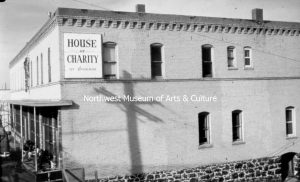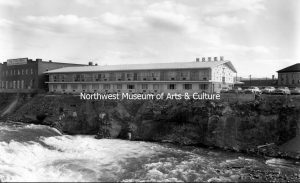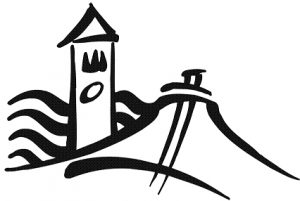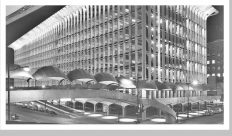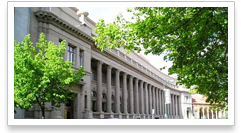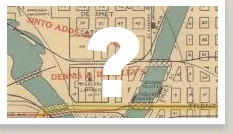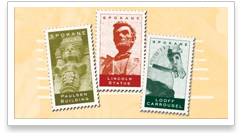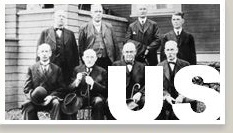The 1960s: A Time of Change
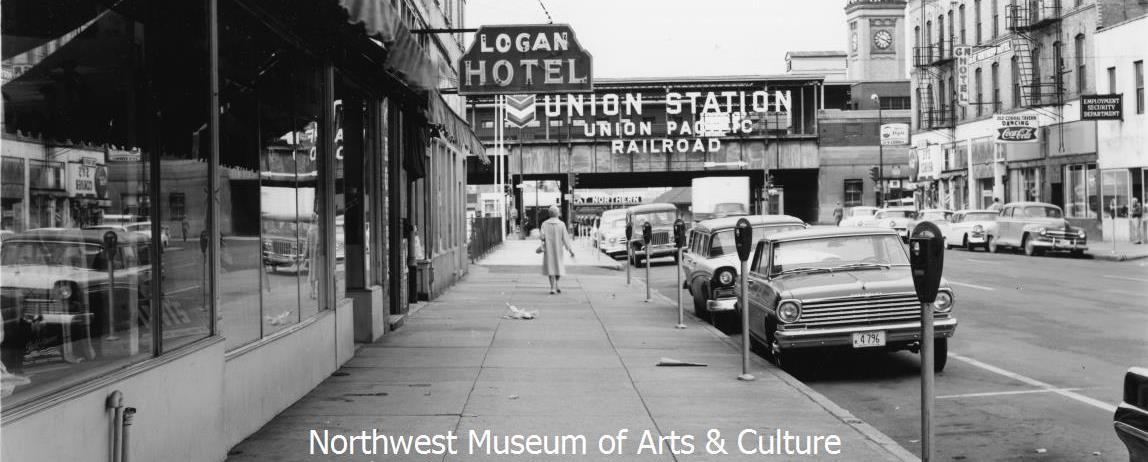 Union Station Overpass, 1964 [MAC L87-1.677-64]
Union Station Overpass, 1964 [MAC L87-1.677-64]
By the 1960s, the project area continued to function mainly as a commercial area. The Griffin Apartments at 602 Washington St. remained occupied and served as the only residential architecture among the many businesses and warehouses in the area. Across the street, the A & A Hotel transitioned into a homeless shelter known as the House of Charity. Located on the east side of Havermale Island, this building would not stand much longer as major changes loomed on the horizon.
New construction did continue along the river despite the tired appearance of much of the area. Two new buildings were constructed in the vicinity by 1965. The YMCA and the Spokane Travelodge Motel both chose Havermale Island as the location for their new buildings. In 1957, the local YMCA chapter purchased land with money donated by a local auto dealer and the Washington Water Power Company, and moved into their new location shortly thereafter.
Marking the end of a forty year run, the Spokane Sleepmaster factory, originally Carmen Manufacturing, was demolished to make way for the Spokane Travelodge River Inn. The new hotel opened its doors in 1960, bringing new opportunities for lodging to the area. Other nearby additions include the Montgomery Ward Co. Auto Service building at 326 Post Street as well as three parking lots in the area. The Griffith & Orr Shell Service Station took over the building that had previously housed the operations of the Washington Steam Laundry after the laundry business closed its doors.
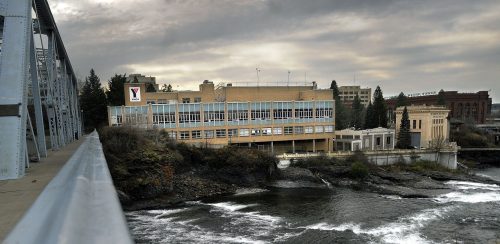 Christopher Anderson, The Spokesman Review
Christopher Anderson, The Spokesman Review
In 1960, the creation of a nonprofit association of downtown businessmen called Spokane Unlimited, Inc. sparked the beginnings of a beautification effort in the central city. Their initial goal included a centennial celebration of James Glover’s “founding” of Spokane – with the real intent of “prying three railroads off the downtown riverfront and somehow cure a laundry list of ailments” that plagued downtown. The story goes that Warren Cooley, a consultant hired by Spokane Unlimited to conduct a feasibility study for this project, instead recommended a World’s Fair themed to the environment. (Spokesman-Review, 9-22-1990) The other organization that was vital to the improved riverfront was ABC – Associations for a Better Community – a countywide voluntary gathering of every civic, religious and fraternal organization in Spokane County, whose priority was for the restoration of the river, beginning in downtown. The result of this collaboration throughout the 1960s was to be Expo ’74…”because of Expo, the river was massively changed and because of Expo the downtown was massively changed as well.” (King Cole, The Spokesman-Review – 7-4-1987)
